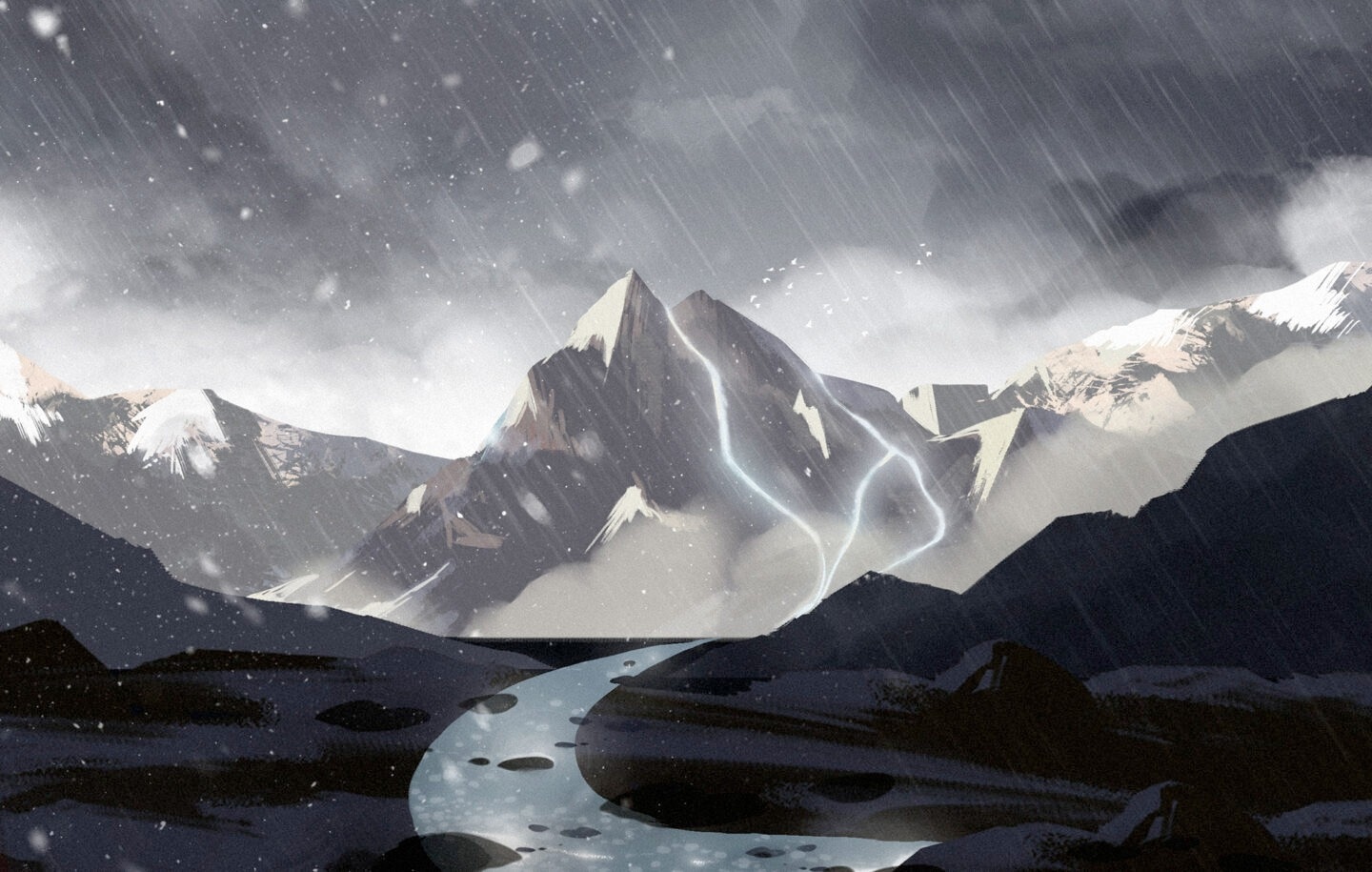With the continuous rise in global temperatures transforming snow into rain, mountains across the Northern Hemisphere will soon become home to extreme rainfall events that have the potential to trigger floods and landslides – which have the potential to impact nearly a quarter of the world’s population.

A new study finds that mountains across the Northern Hemisphere will be vulnerable to extreme rain and the hazards that come with it. Image Credit: Jenny Nuss/Berkeley Lab.
Global warming is playing a major role in the increasing occurrence of extreme weather events and altering their appearance. At the Department of Energy’s Lawrence Berkeley National Laboratory (Berkeley Lab), scientists have discovered that climate change is contributing to the shift from snowfall to rainfall on mountains throughout the Northern Hemisphere. Such surges of liquid water bring a clear set of dangers, such as landslides, floods, and soil erosion.
One quarter of the global population lives in or downstream from mountainous regions. They are going to be directly affected by this risk.
Mohammed Ombadi, Study First Author, Lawrence Berkeley National Laboratory
The study mentioned here was recently published in the journal Nature.
Researchers are already expecting climate change to increase the volume of water falling during extreme events (which typically take place over a few hours to a day), but this study is the first time scientists have examined whether that extreme precipitation comes as rain or snow.
The researchers soon discovered that the amount of water falling as snow was much lower in mountainous regions, where it was instead seen to fall as rain – meaning that mountains in these regions are becoming increasingly susceptible hazards as a result of extreme rain. The researchers were even able to put a number to it: For every 1 degree Celsius increase in the global temperature, researchers expect an average of 15% more rain at high elevations.
This increase in rainfall extremes is not only something that is going to happen from now until the end of the 21st century – we’re already seeing it. That same rate was also evident in the data from 1950 to 2019. Rainfall extremes in mountains have already been increasing, and will continue to change with that 15% rate.
Mohammed Ombadi, Study First Author, Lawrence Berkeley National Laboratory
While all the mountain ranges in the Northern Hemisphere are seeing the shift from snow to rain, those at greatest risk of extreme rainfall events are the North American Pacific mountain ranges (the Cascades, Sierra Nevada, and coastal ranges from Canada to Southern California), the Himalayas, and high-latitude regions. More work is needed to understand why certain regions are at higher risk than others.
We think that North American Pacific Mountain ranges are more susceptible to the risk of rainfall extremes than other mountain ranges because a significant portion of snowfall in this region typically occurs at temperatures just below zero degrees Celsius.
Mohammed Ombadi, Study First Author, Lawrence Berkeley National Laboratory
Ombadi added, “The slightest change in air temperature will shift this snowfall to rainfall. This is unlike other mountain ranges where snowfall may occur at very low temperatures below zero degrees.”
Ombadi hopes that fellow climate scientists will incorporate the distinction between snowfall and rainfall to improve global climate models and that civil engineers and planners will use the data to better prepare for intense rain events.
Ombadi stated, “We need to factor these results into how we design and build the infrastructure in these mountainous regions so that they can withstand the negative consequences of increases in rainfall extremes.”
However, efforts must still be made to help countries meet targets established by the Paris Agreement that would limit global warming to less than 2 degrees Celsius above pre-industrial levels.
“Our findings revealed a linear relationship between the level of warming and the increase in extreme rainfall: For instance, 1 degree of warming causes 15% more rain, while 3 degrees leads to a 45% increase in rainfall,” stated Ombadi.
Ombadi added, “There are many technologies in progress that could help us reduce greenhouse gas emissions and how much the planet warms. To me, this study shows the need to invest in those clean solutions, and also start preparing for the consequences of warming now.”
This study was financially supported by the DOE Office of Science Biological and Environmental Research program, both through CASCADE (Calibrated and Systematic Characterization, Attribution, and Detection of Extremes) and iNAIADS (iNtegration, Artificial Intelligence, and Analytical Data Services), a DOE Early Career Research Award.
Journal Reference:
Ombadi, M., et al. (2023). A warming-induced reduction in snow fraction amplifies rainfall extremes. Nature. doi.org/10.1038/s41586-023-06092-7.
Source: https://www.lbl.gov/